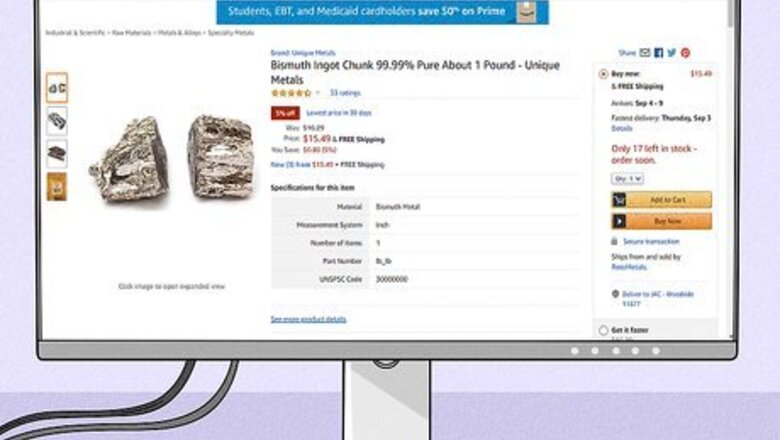
views
Materials
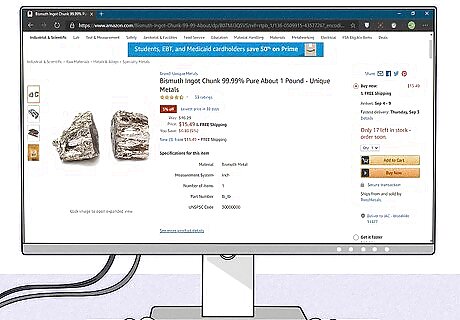
Buy 3 kilograms (6.6 lb) of Bismuth. Bismuth is a fairly cheap metal but it is also very dense (it is often used as a substitute for lead). As such, you should buy several pounds/kilograms of it, to ensure you have enough to do the experiment again if you want to. Because it is such a dense metal, be aware that you may need to buy more weight than you think as the pieces may be smaller than you were expecting. To achieve the highest quality crystals, try and get hold of Bismuth that is of the highest purity (around the 99.99% mark). The easiest way to buy Bismuth is online.
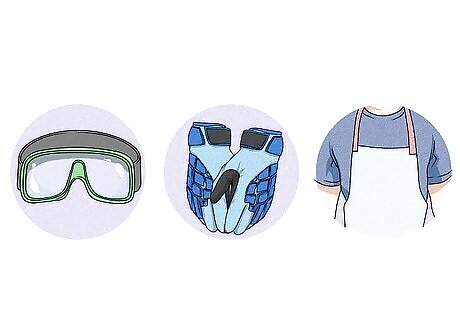
Have the right safety equipment around. The experiment does involve dealing with molten metal at a temperature of around 271 °C (520 °F). Like any liquid on a stove, it is not unusual for the metal to spatter and end up outside the vessel. As such, using appropriate safety equipment is extremely important. This includes: Goggles Sturdy gloves Apron Fire extinguisher
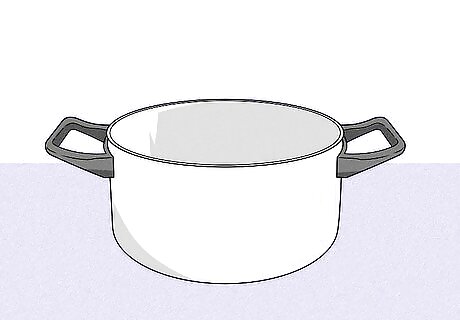
Use a low-quality pot that you don’t mind not seeing clean again. Once you have melted the Bismuth in your pot, it’s highly unlikely that you will ever get that pot totally clean again so a cheap pot you don’t mind throwing out afterward is probably best. Tall pots with a smaller diameter work better as the crystals form downwards from the surface of the molten metal.
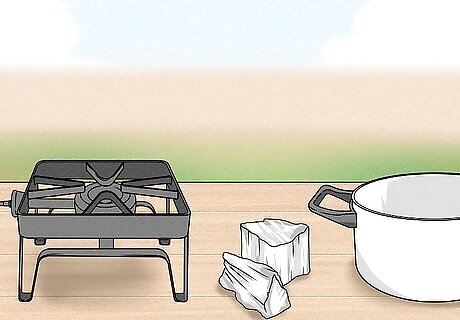
Work outside if possible. Working outside will give you more freedom to make mistakes and also be much safer. Be aware that some cheaper portable electric stoves don't have enough power to melt the Bismuth. If you do work inside, make sure you have a fire extinguisher nearby.
Bismuth Melting
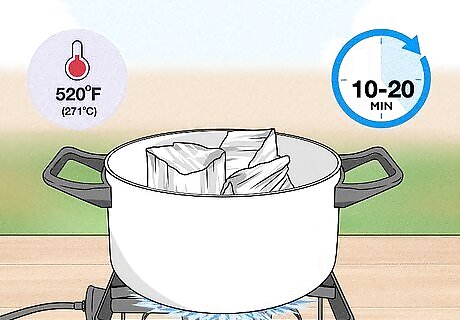
Put the Bismuth in your pot and begin to heat the container. The melting point of Bismuth is 271 °C (520 °F) and it will take 10-20 minutes to get the Bismuth up to this temperature. Use a fork to stir any remaining bits of Bismuth in with the rest of it. Be aware that as the Bismuth melts it may bubble and spatter so use a lid if you can.
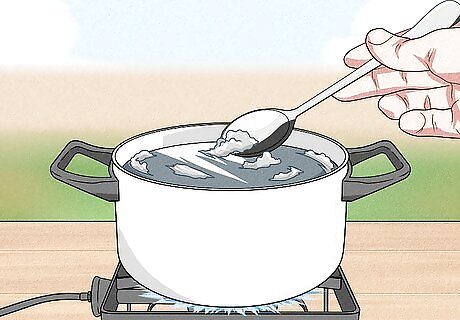
Scrape away the shiny layer that has formed on the Bismuth. The impurities in the Bismuth will rise to the top as the Bismuth melts. Once it is completely melted, these impurities will form a layer on top of the liquid. Use a spoon or other utensil to scrape this layer away and discard elsewhere on a non-flammable surface. This is extremely important to make sure that the Bismuth crystals start forming at the right time.
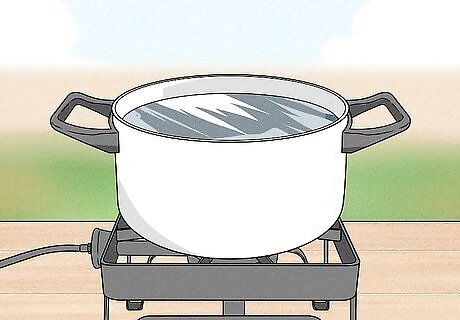
Turn off the heat once all the Bismuth is melted. In order to allow crystals to start forming the heat must be turned off. This occurs as the Bismuth starts moving back to a solid state from its molten state. In order to reduce the speed at which the temperature of the Bismuth drops, some people turn the heat down gradually rather than straight off.
Crystal Formation
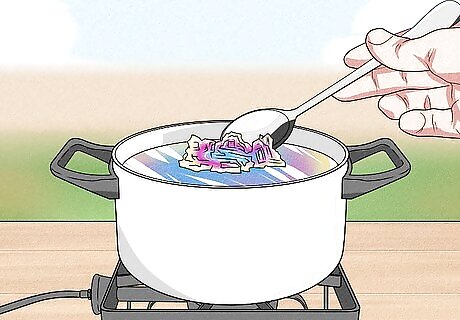
Wait for a solid layer to form on top. The Bismuth will cool from the outside in and a firm layer will form on top which should then be removed. Moving the pot unnecessarily can mean ending up with smaller crystals so try gently pushing on the top layer with a fork. This will give you an indication of whether a top layer has solidified or not. The reason you need to remove the top layer is so that the crystals forming on the bottom don’t link up with the top layer. If this happens, your crystals will be trapped in. Use a fork or spoon to scoop the top layer out from the rest of the Bismuth.
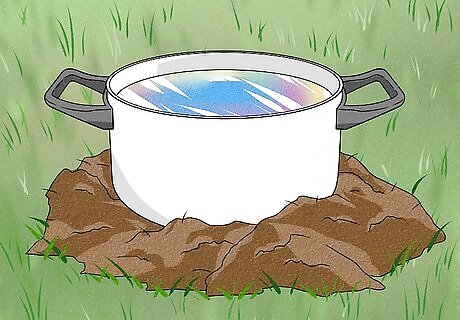
Cool the Bismuth as slowly as possible for larger crystals. This can be done by insulating the pot from the outside as this is where most of the heat is lost. Placing the pot into a tin foil mold or into a pile of sand are both good options for insulation.
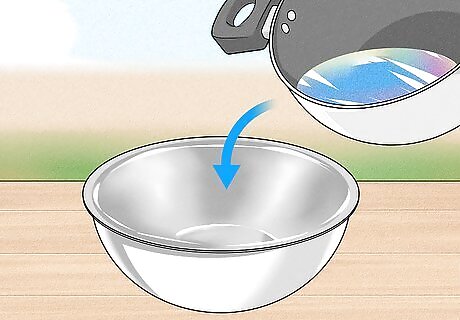
Pour the rest of the liquid Bismuth into a separate bowl. As you have already removed the top layer, there will be a pool of liquid Bismuth underneath it. To create the largest crystals, pour the liquid out when the whole pot of Bismuth is about halfway between its molten and solid state. Getting the timing correct here can take a little bit of practice so don't worry if you don't get it quite right the first time. If the separate bowl is not metal then you should heat it so it doesn’t crack from heat shock.

Examine your crystals. Once you've removed the liquid from your pot, the Bismuth that solidified in the time you gave it will have formed crystals in your pot. These will initially appear to be silver but will quickly change color depending on the temperature that they were first exposed to oxygen at. Use a pair of pliers to pull crystals out of the pot. Alternatively, place the pot face down and bang firmly on the base of it a few times. With any luck, the whole solid piece of Bismuth will come out and you’ll be left with a large chunk with many crystals inside it.


















Comments
0 comment